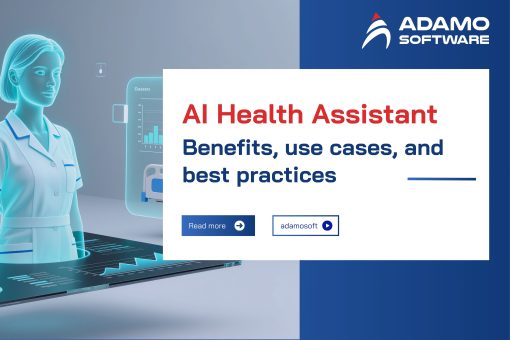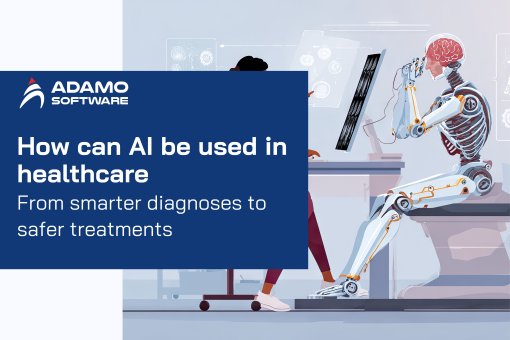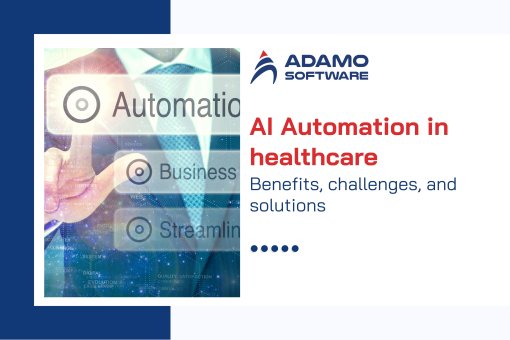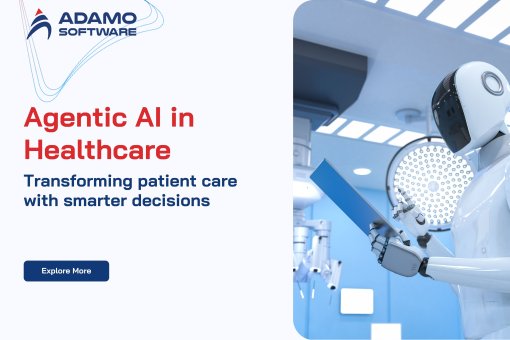EMR integration service: A brief overview with examples
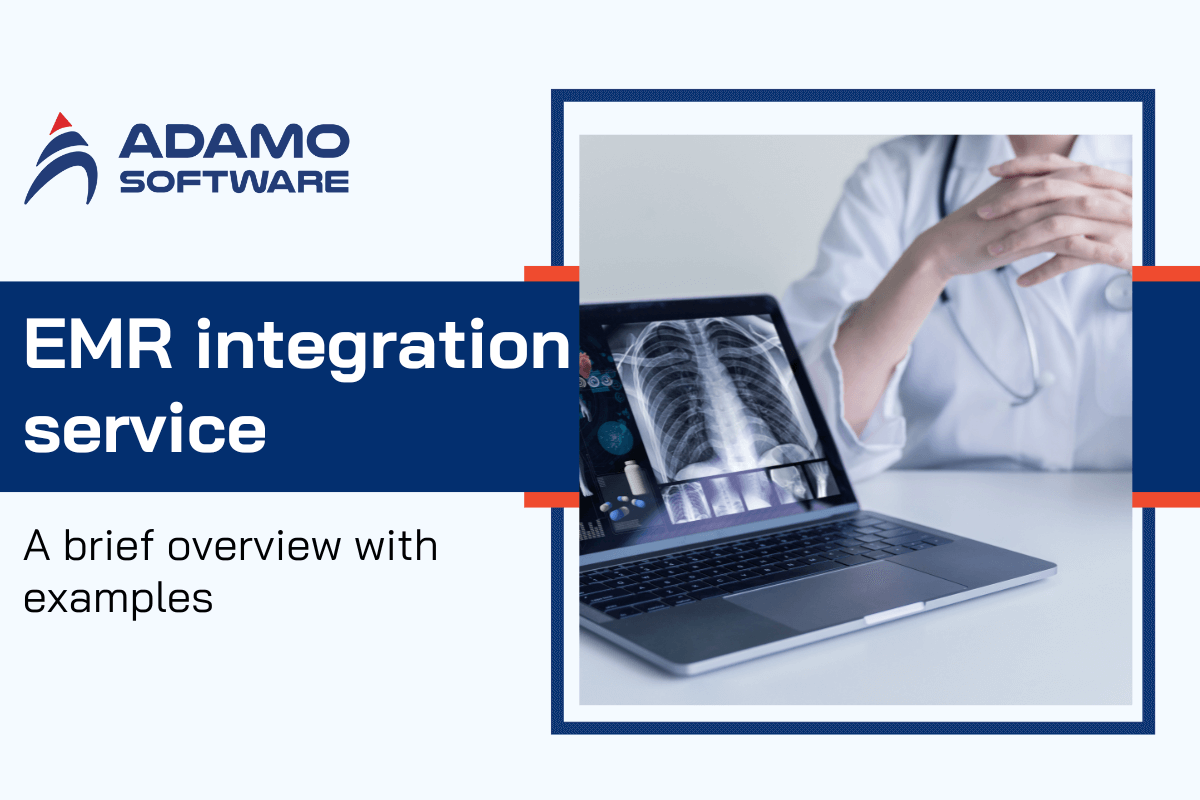
EMR integration service is revolutionizing the healthcare sector through the integration of patient data in different platforms. These services facilitate smooth interaction between different healthcare organizations. Thanks to that, practitioners can receive timely and credible information about patients.
As more healthcare organizations implement EMR systems into their practices, integration has emerged as a critical factor for the efficient operations of clinics. They aid in increasing the effectiveness of patient care, decreasing medical mistakes, and increasing organizational productivity. EMR integration service links laboratory systems, radiology departments, and even telehealth in hospitals, providing clinicians with real-time information.
It is important to note that EMR integration is a complex process that needs adequate planning, well-defined goals, and constant cooperation from all the participants. In this article, we will explain the major steps to EMR integration and present case studies of various hospitals. We’ll also discuss the best practices of EMR integration and look into the future of this important healthcare technology.
Finally, we’ll see how outsourcing IT companies can help healthcare providers establish and sustain the needed EMR integration services. If the right strategy is adopted, EMR integration service will help healthcare organizations effectively enhance patient care and the organization’s efficiency.
I. What is EMR integration service?
EMR integration service can be understood as the process of integrating EMR with other systems to enhance the functionality of the former. EMR integration services allow hospitals to connect EMR with other healthcare software applications. This process helps to avoid the sharing of data in an inefficient and insecure manner.
Even though there have been significant advancements in healthcare, many doctors still have difficulties when looking at patients’ medical data. That’s because many medical records are still stored in the traditional form, making it hard to find or visualize data when needed.
There comes the need for EMRs. EMRs will store clinical records in a form that is more comprehensive and easy-to-understand for more accurate diagnosis. However, even with EMRs alone, the problem won’t be solved. When patient data is isolated, the physicians of different practices cannot have easy access to a patient’s records.
The absence of proper EMR integration service has been a major cause of burnout in healthcare. It is important to integrate them well so that the patient data can be easily accessed and enhance care coordination.
Lack of patient documents and history negatively affects patients and care providers alike and leads to poor care.
EMRs are important for health care and eradicating integration limitations is critical to harness their potential. When EMRs relate to other clinical systems, data gets structured and available to different providers.
To fully comprehend the EMR integration service, let’s have a look at its importance and some typical examples of EMR integration at hospitals.
Also read: What is EMR in Healthcare: Types, Features, Cost
II. The importance of EMR integration service: Statistics included
It is evident that EMR systems and their integration into healthcare cannot be underestimated. That’s because the management of large patient data is a crucial practice in healthcare practices. On-paper charting, handwritten notes, and documentation processes are inefficient, inaccurate, and inconvenient for data searching and analysis. It is not so much different from trying to look for a needle in a haystack.
EMR systems, in contrast, involve the electronic documentation of patients’ records, thus making data more manageable. The market for EMRs was valued at approximately USD 28,7 million in 2021. This number is expected to rise to USD 42+ million by 2028. It’s a huge thing!
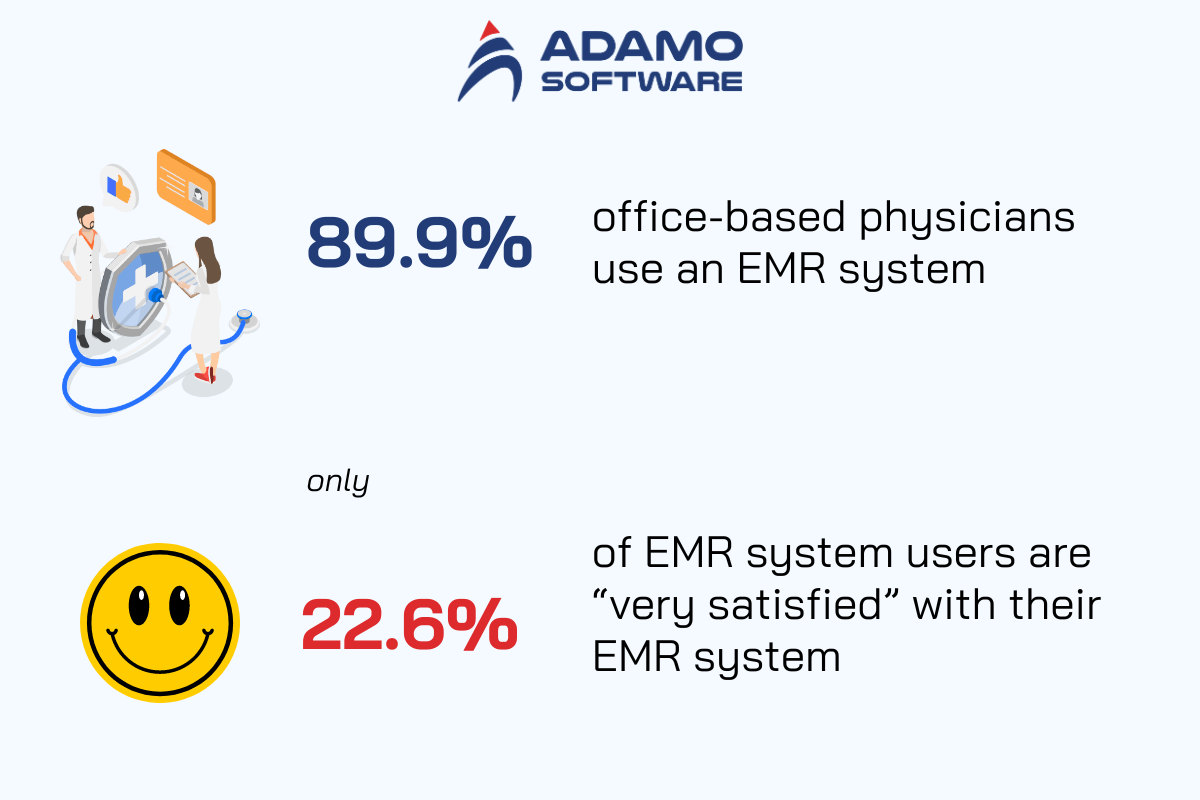
Those numbers are proof of the increased use of EMRs. That’s understandable since using digital health records surely provides many more benefits than traditional ones. These electronic health records provide the patient’s complete medical profile. This includes diagnosis, medication, patient’s age, any known drug allergies, notes, and even the results of the lab tests. More importantly, they are retrievable from anywhere, anytime.
Thus, interoperability of EMR systems with other healthcare technologies is a key to achieving maximum efficiency. This EMR integration service helps eliminate the time gap between the EMR systems and other software, sharing information with different healthcare practitioners. The integration not only reduces the operation costs but also improves the quality of care that is being offered to patients.
Also, the switch to an Imaging EMR, such as OmegaAI, that consolidates multiple systems (EMRs, RIS, HIS, PACS, VNAs) brings various advantages. OmegaAI has features such as real-time ROI, an easy-to-use interface, cross-device compatibility, and a full-spectrum view of patient records. This integration with other services like Blume for patient portals will definitely enhance care quality. They will help consolidate access to medical data for patients and doctors, making it a true testament to the modern EMR integration service.
III. Typical examples of EMR integration in hospitals
It is necessary to connect EMR systems to other hospital activities and processes to enhance the outcomes significantly. Key examples of this integration highlight its transformative impact:

1. Telehealth integration
The first example of EMR integration is telehealth integration. Telehealth integration enables patients’ consultations through the use of communication technology. Thus, it helps increase access to healthcare services and reduce costs of transport for the patient.
2. Laboratory information system (LIS) integration
Laboratory information system (LIS) integration enhances the integration of lab data into EMRs. Hence, it can eliminate the need for manual input and subsequent errors in data transcription and provide timely lab data for decision-making.
3. Clinical trial management system integration
Integrating clinical trial management systems allows hospitals to import trial data into EMRs, providing complete patient records. It also offers ongoing assessment of patient status and trial results with immediate communication between the caregivers and the research teams.
4. Medical device integration (MDI)
Medical device integration stores medical device data into EMRs in real time, allowing for continuous assessment of patient status. Alerts will also be issued when necessary, while the accuracy and timeliness of the recorded data will be enhanced as well.
5. Medical billing integration
Another application of EMR integration in hospitals is medical billing integration. It eliminates manual work on billing hence decreasing the chances of making mistakes. Additionally, it shortens the billing process to allow quick reimbursement of health services.
6. Picture archiving and communication system (PACS) integration
Next up on this list is picture archiving and communication system integration (PACS). That’s a long name to remember, but its benefits will make it more memorable. PACS helps consolidate radiology images in the EMRs. So, healthcare providers can review and interpret the imaging findings and engage in discussions based on the images.
7. Pharmacy information system integration
Pharmacy information system integration is also one of the most typical examples of EMR integration. It combines prescriptions and medications into EMRs, creates complete medication lists, alerts clinicians of possible drug interactions, and automates prescription refills.
8. Electronic prescribing (eRx) integration
Electronic prescribing integration facilitates the electronic transfer of prescriptions to pharmacies to cut down on paperwork. It also provides the prescriber with the patient’s previous medication record for decision-making. Moreover, it ensures patient compliance by electronically monitoring their adherence to medications.
9. Radiology information system (RIS) integration
The next type of EMR integration is radiology information system (RIS) integration. RIS integrates radiology data into EMRs, reduces data redundancy, automates radiology reporting, and improves the understanding of results.
10. Health information exchange (HIE) integration
The last part of this list is health information exchange (HIE) integration. HIE integration enables the sharing of patient information between different healthcare organizations. This helps improve interoperability and the compilation of data from various sources for a single patient record.
IV. Secrets for a successful EMR integration
The efficiency of EMR integration service is not just about the technical work. It is also about engaging with your team to ensure the services have a positive impact on productivity and the patients. Here are five key tips for a successful EMR integration:
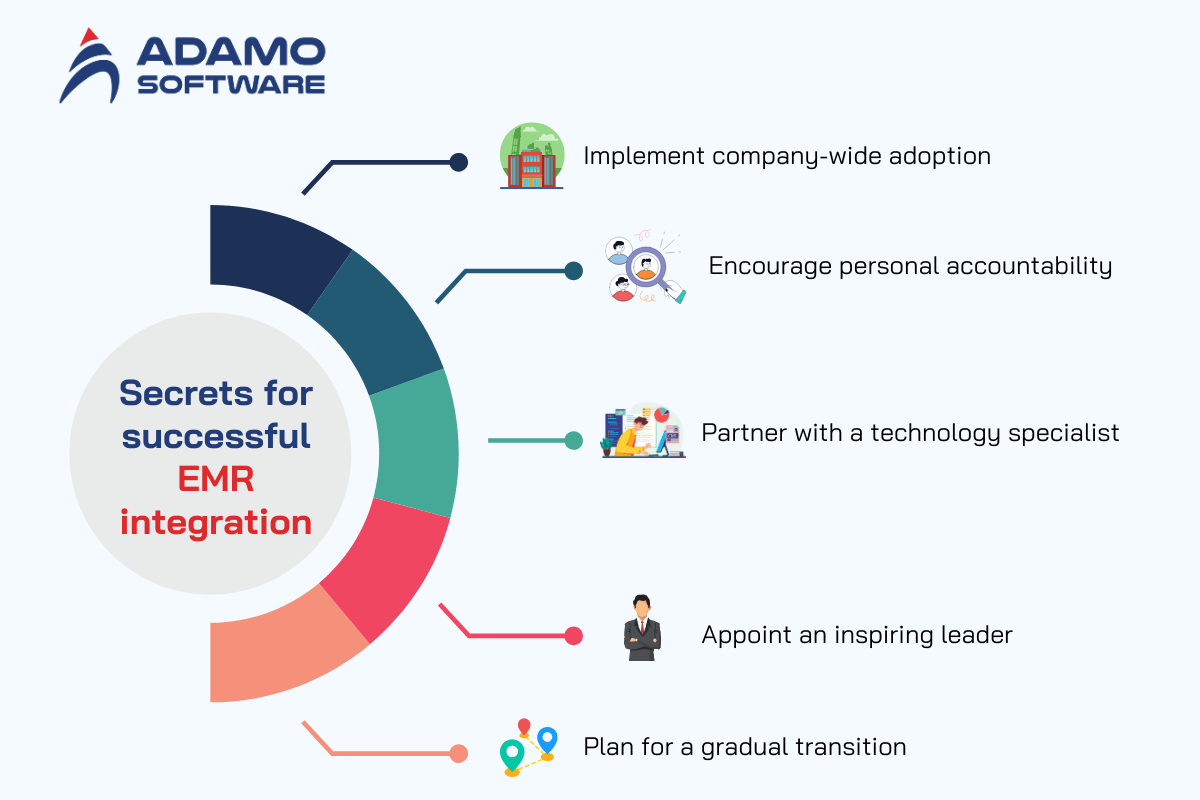
- Implement company-wide adoption: To get the most out of digital change, you must encourage EMR integration services throughout your organization. Make it certain that all personnel know what the system can do, why it is necessary, and what it can do.
- Encourage personal accountability: It is important that leadership leads by example. However, the rest of the organization also needs to adopt a personal accountability culture. Every employee must take responsibility for the proper and efficient use of the EMR system.
- Partner with a technology specialist: Discuss with a tech partner which aspects of the EMR system can be enhanced and adjusted to fit your business. An experienced partner can provide helpful suggestions on customization and integration that will add to the system’s utility.
- Appoint an inspiring leader: Select an early adopter, who will be the first to go through the entire process of mastering the system. This individual should be able to show the way to others and help them with the use of the system. That person must ensure that the integration services of the EMR are optimized.
- Plan for a gradual transition: Understand that the staff will not be able to fully employ all the functions of the EMR system at once. Set up goals and objectives to facilitate the transition process, enabling employees to ease into the new system and working environment.
Such approaches will help ensure that EMR integration services are useful in accomplishing your organization’s objectives and enhancing healthcare quality.
V. The future of EMR Integration services
It is safe to assume that EMR integration services have been changing and will continue to develop along with the development of healthcare. These services will have a significant role in improving the quality of services and patient outcomes. Here are some key trends that will shape the future of EMR integration:
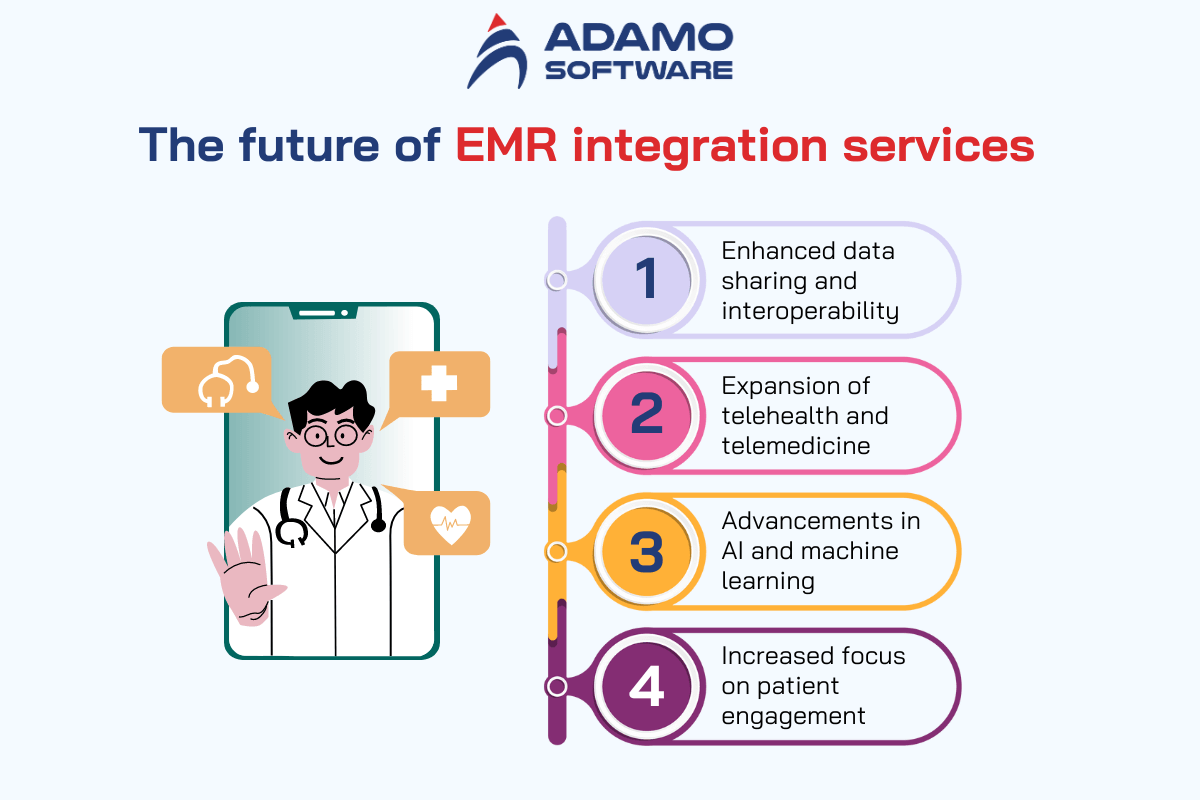
1. Enhanced data sharing and interoperability
Future EMR integration services will focus on enhancing data exchange between multiple practitioners in the health sector. In this way, patient data from various sources will be easily accessible. Therefore, healthcare professionals will be in a better position to provide proper care and treatment to the patient.
2. Expansion of telehealth and telemedicine
This will be important as telehealth and telemedicine start to be used to extend health care services and deliver health care products. Telemedicine can be incorporated with EMR systems to enable healthcare practitioners to prescribe medication and review patients through virtual consultations. Additionally, they can follow up with patients who are situated in distant or disadvantaged areas.
3. Advancements in AI and machine learning
Pervasive use of technology such as artificial intelligence (AI) and machine learning will continue to shape the integration of EMR services. These technologies will enable providers to rapidly and effectively diagnose and assess the overwhelming quantities of data generated about each patient. Ultimately, it will result in more effective treatment plans and individual patient management.
4. Increased focus on patient engagement
The next generations of EMR integration services will be inclined toward the patient’s involvement more than before. Research results have shown that integrating EMR systems with patient engagement tools will allow the provider to make patients’ care more personalized. Hence, they can increase patient satisfaction and follow the patient’s compliance with the treatment plan.
In conclusion, the prospects for EMR integration services will remain favorable in the future. That is thanks to the constant development of new technologies and improvements in the sphere of medicine. The application of professional knowledge within this area will facilitate the growth of healthcare to improve the lives of patients and their outcomes.
VI. How Adamo helps you to make your own effective EMR integration service
Adamo Software is the right choice for creating an efficient EMR integration service as we have both IT knowledge and healthcare experience. We have a highly qualified team of developers who work on developing unique healthcare software solutions that can enhance efficiency. This will contribute to the enhancement of patient care while meeting all the medical requirements of the healthcare industry.

Our core competency is its commitment to providing high-quality, secure solutions that are quick to market and inexpensive. Adamo can deliver a wide range of EMR integration services that improve communication and minimize paperwork and delays for real-time data. Additionally, using AI and blockchain, we improve the security and capabilities of your EMR systems, maintaining data accuracy and meeting compliance requirements.
Working with us will ensure you get the best of innovation, security, and operational efficiency that makes your EMR integration efficient and future-proof. Contact us today for a detailed consultation.







